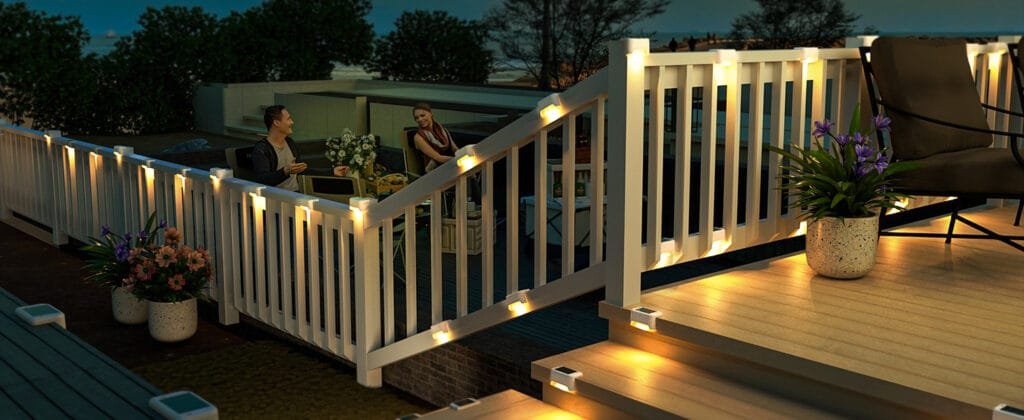Solar lights are a fantastic way to illuminate your outdoor spaces while being energy-efficient and environmentally friendly. But a common question arises: Do solar wall lights need direct sunlight to work? Many people assume they need direct sunlight to function at their best, but the reality is a bit more nuanced. Solar lights do rely on sunlight to charge, but they don’t necessarily need to be in direct sunlight to work. Let’s dive into how they function, and how factors like shade and cloud cover impact their performance.

Solar wall lights do not necessarily need direct sunlight to function, but they perform best when exposed to it. While indirect sunlight or cloudy weather may still allow the lights to charge, their performance will be significantly reduced. Solar lights rely on photovoltaic cells that convert light into energy. The more intense the light, the more efficiently they work. So, if you’re considering installing them in shaded areas, be aware that they may not provide the brightness or longevity you’re expecting.
Will Solar Lights Work with Indirect Sunlight?
Solar lights can still work with indirect sunlight, but their performance will not be as efficient as when exposed to direct sunlight. Indirect sunlight provides less energy, so the solar panels have to work harder to convert that light into usable energy. This means that the lights may not last as long or shine as brightly as they would under direct sunlight.
If you’re installing your solar lights in an area that doesn’t get direct sun—like a north-facing wall or a location under a tree—you can expect them to charge slower and produce dimmer light at night. However, they’ll still work, just not at their optimal level.
Will My Solar Lights Work in the Shade?
Yes, solar lights can work in shaded areas, but with a few caveats. The key issue with shaded areas is the reduced amount of sunlight, meaning the photovoltaic cells won’t charge as efficiently. Some solar lights are designed to perform better in low-light conditions, and they can still provide illumination in partial or full shade, but they will not offer the same level of brightness as lights placed in sunny spots.
If you’re placing solar wall lights under trees, awnings, or near large structures, it’s important to know that while they might still work, their light output will be significantly less. For optimal performance, try to place solar lights in areas that get at least a few hours of direct sunlight each day.
Do Solar Lights Work If It’s Cloudy?
Absolutely! Solar lights can still work on cloudy days, though their charging process is slower, and they won’t be as bright at night. Cloudy weather reduces the intensity of sunlight, meaning the solar panels collect less energy. But even on overcast days, the lights will still charge from ambient light.
If you live in an area with frequent cloudy weather, you may want to choose high-quality solar lights designed to perform better in less-than-ideal conditions. Lights that come with large or more powerful solar panels are more efficient and can still gather enough energy to function on cloudy days, although not at peak capacity.
Do Solar Lights Work in the Dark?
Solar lights rely on sunlight to charge and typically illuminate at night. These lights are equipped with light sensors that detect when it gets dark and automatically switch on the light. When the sun comes up, they turn off to conserve energy.
However, if solar lights have not received enough sunlight during the day—whether due to cloud cover, shade, or insufficient exposure—they may not shine as brightly or for as long at night. This is why it’s essential to place your solar lights in areas that get good exposure to sunlight during the day for maximum nighttime performance.
How to Charge Solar Lights Without Sun?
Charging solar lights without direct sunlight can be tricky but not impossible. If your lights aren’t exposed to enough sunlight, you can try placing them under artificial light sources like incandescent or LED bulbs, although this won’t be as efficient as using natural sunlight.
Another option is to charge solar lights in indirect sunlight, such as near windows or in areas where light filters through. While they won’t charge as fast or fully, it will still give them a bit of energy to function at night. Keep in mind that extended periods without enough sunlight will lead to reduced performance.
Best Solar Lights for Shaded Areas
If you’re looking to install solar lights in shaded areas, you should consider lights specifically designed for low-light environments. Some solar lights are made with more powerful or larger solar panels that can capture ambient light and still function well in partial shade. For example, garden path lights or decorative solar lanterns are a great option for spaces that don’t get direct sun.
Additionally, solar lights with rechargeable batteries can store more energy and work longer, even in shaded areas. When shopping for solar lights for these types of locations, look for lights labeled as “all-weather” or those that mention good performance in low-light conditions.
Summary
In conclusion, solar wall lights do not necessarily need direct sunlight to function. They can work with indirect sunlight or even on cloudy days, though their performance will be reduced. For the best results, install your solar lights in areas with ample sunlight exposure. If you’re working with shaded areas, choose lights designed for low-light conditions to ensure you get the most out of your investment.
